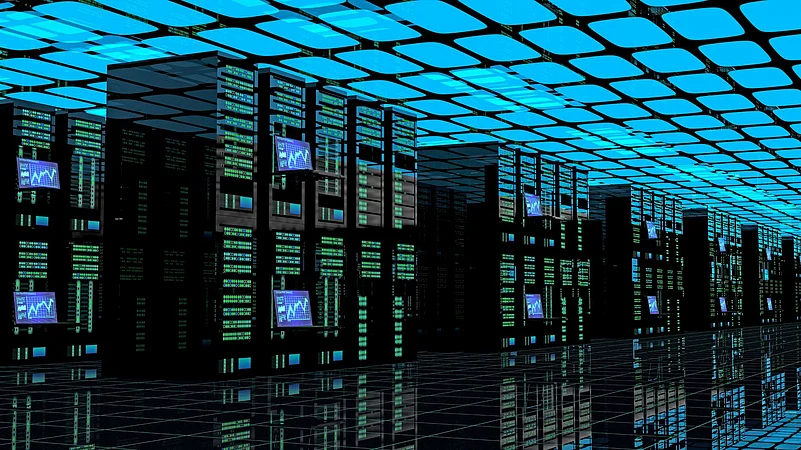Artificial intelligence has become the most talked-about thing in recent years. With its demand in each and every field, no doubt its demand is increasing. But there is a catch here. AI needs data centers. Data centers need power.
Just to give an example, as per the International Energy Agency, a simple search on ChatGPT costs 2.9 watt-hours of electricity. While a Google search consumes only 0.3 watt-hours of electricity. From 2023 to 2030, the demand for AI will add around 200 terawatt-hours of power use each year in data centers from 2023 to 2030, as per a report by Goldman Sachs.
Advertisement
“As of June 2023, India's data centers used around 139 billion kilowatt-hours (kWh) of power; that is a 4.4 percent increase from the year before,” said Ankur Mittal, Partner, Physis Capital & Co-Founder, Inflection Point Ventures.
The data centers primarily rely on coal as a source of energy. Further, a significant portion of this electricity consumption continues to be supplied by state-owned discoms that generate power through coal or thermal sources, add experts. Overall, it can be said that coal continues to be the primary driving factor, with around 30 percent of the power coming from the renewable sector.
While the overall consensus as of now is that data centers consume too much electricity, some believe that there is too much hype about the power being used by data centers. Some experts argue that one needs to see the power demand of data centers in the right context.
Advertisement
“As of early this year or late last year, the average power consumption per rack in a data center was around 8.1 kilowatts. This might surprise some people because there has been a lot of buzz in the industry about much higher figures, like 100 kilowatts or even 150 to 200 kilowatts per rack,” said Sanjay Motwani, Business Head, Legrand Data Center Solutions, India. However, the reality is that the average is still closer to 10 kilowatts per rack when you look at all data centers across the board.
To put it simply, an average urban household consumes between 6 and 10 kilowatts of power, which is roughly equivalent to the power usage of a single rack in a data center. In large-scale data centers, rack power consumption typically ranges from 20 to 25 kilowatts, added Motwani.
However, for data centers focused on AI applications, power demands can spike significantly, with some requiring 100 to 200 kilowatts per rack.
“Despite the noise and hype around the increasing power demands of data centers, the reality is that only a small number of data centers require such high power consumption. These high-demand environments, which are often associated with cutting-edge AI research and development, are not the norm,” said Motwani.
Advertisement
AI is an exciting field, and hence the conversation is more about it. However, the reality is that while there is some truth to the growing energy demands of AI-driven data centers, the vast majority of data centers are still operating at much lower power levels, he adds.
Enter Renewable
Amid the debate that has been happening about the power demand of data centers, one thing that is visible is the shift of these centers to renewable as an alternative source of energy.
One example of the same is that Reliance has announced recently that it will build an AI-powered data center in Jamnagar in August this year. “We plan to establish gigawatt-scale AI-ready data centers in Jamnagar, powered entirely by Reliance’s green energy, reflecting our commitment to sustainability,” Reliance chairman Mukesh Ambani said in an annual general meeting. Additionally, reports suggest that Google is planning to build its data centers with the help of nuclear power. The tech giant has powered with US-based Kairos Power that will help power its AI data centers.
Advertisement
While the shift to renewable energy has been happening, there are several challenges to it. Some of the challenges, as per experts, while entering the field of renewable energy include infrastructural limits, high initial setup costs, land and resource constraints, and regulatory barriers.
“The main challenge with using renewable energy, like solar, to power these data centers is space. For instance, if a data center occupies 100,000 square feet, only a portion of that space could be used for solar panels—typically about 25 percent of the total space. The remaining 75 percent is still dedicated to the data center’s operations,” said Bharath Rnkawat and Jharna Saha, founders of Enlog.
Advertisement
Experts have added that the reliability of solar power remains a concern, as it is weather-dependent. While solar technology has improved, issues around efficiency and storage capacity still hinder its widespread adoption. To add to it, there are challenges in sourcing and storing renewable energy. Just to give an instance, data centers would still need a reliable power grid backup as renewable energy alone is not consistent.
“If you generate renewable energy, you also need a solution to store it, and that’s expensive. It's not as simple as just switching to renewables—data centers need infrastructure to manage the transition smoothly between renewable sources and traditional power,” added Motwani.
Advertisement
A research paper titled ‘A survey of challenges and solutions for the integration of renewable energy in datacenters’ published in March 2022 says that integrating renewable energy in data centers comes with its own technical difficulties. If the data center is powered by local renewable energy, it faces challenges including fluctuating energy needs and real-time balancing of supply and demand.
The energy demand of a data center isn’t constant—it can vary depending on usage or system loads. This variability can make it hard to match the fluctuating supply from renewable sources. Further, data centers need a highly reliable power supply for their operations. If the power goes out, even briefly, it can have major impacts on the services they provide, adds the report.
This is where the government can step in and add experts. They believe that state governments, in collaboration with the central government, could incentivize data centers to be set up in regions with abundant renewable energy resources. “States could create data center hubs powered by renewable energy farms, making it easier for data centers to access clean power. Without such initiatives, the transition will remain slow and fragmented,” added Motwani.
The country currently has the Data Center Policy, which aims to create a favorable climate for investments in data centers. The policy provides provisions for companies using renewables in the form of tax breaks and subsidies. “However, to further accelerate this adoption, policymakers can consider including grants for research and development in energy-efficient technologies, streamlined regulatory processes, and support for the development of renewable energy infrastructure,” said Manoj Agarwal, Managing Partner, Seafund. Amid the increasing challenges, it will be interesting to see how data centers survue the wind and increase their renewable energy intake.
















 Just one email a week
Just one email a week